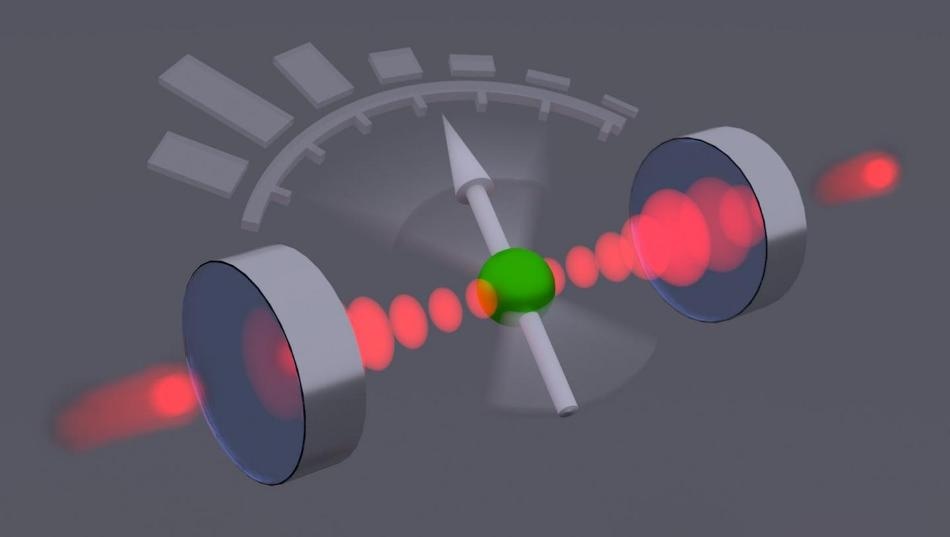May 6 2019
At present, physicist Tracy Northup is analyzing the advancement of quantum internet at the University of Innsbruck. The US citizen develops interfaces that can be used to transfer quantum information from matter to light and vice versa.
 An ion between two spherical mirrors serves as a quantum sensor for light particles. (Image credit: Klemens Schüppert)
An ion between two spherical mirrors serves as a quantum sensor for light particles. (Image credit: Klemens Schüppert)
It is expected that in the future, quantum computers across the globe will be in a position to communicate with each other over such interfaces through fiber-optic lines. In the study, Northup and her colleagues from the Department of Experimental Physics have currently demonstrated a technique that can be used for non-destructive measurement of visible light.
The development builds on the study of Serge Haroche, who characterized the quantum characteristics of microwave fields using neutral atoms in the 1990s and was awarded the Nobel Prize in Physics in 2012.
In the study headed by postdoc Moonjoo Lee and PhD student Konstantin Friebe, the scientists placed an ionized calcium atom between two hollow mirrors. Visible laser light is guided through these mirrors.
The ion has only a weak influence on the light. Quantum measurements of the ion allow us to make statistical predictions about the number of light particles in the chamber.
Tracy Northup, Ingeborg Hochmair Professor, Department of Experimental Physics, University of Innsbruck
The research team headed by Helmut Ritsch, a quantum optician from the Innsbruck Department of Theoretical Physics, supported the physicists in their interpretation of the measurement results. “One can speak in this context of a quantum sensor for light particles,” summed up Northup, who has held an Ingeborg Hochmair professorship at the University of Innsbruck from 2017.
One application of the new technique would be to produce unique customized light fields by feeding the results of the measurement back into the system through a feedback loop, thereby establishing the desired states.
In the current study reported in Physical Review Letters, the researchers have restricted themselves to classical states. This technique could be used in the future for the measurement of quantum states of light. The study was financially supported by the Austrian Science Fund FWF and the European Union, among others.